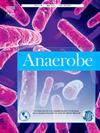The genus Fervidobacterium, its thermoenzymes and biotechnological potential: an integrative review
IF 2.6
3区 生物学
Q3 MICROBIOLOGY
引用次数: 0
Abstract
The genus Fervidobacterium has only seven described species to date, namely F. changbaicum, F. gondwanense, F. islandicum, F. nodosum, F. pennivorans, F. riparium and F. thailandense. These species were first isolated from places with high thermal amplitude, such as hot springs and sites that originated from volcanic activity. With temperatures ranging from 40 °C to 90 °C, they are characteristically considered hyperthermophilic. This genus belongs to the phylum Thermotoga, composed of families of extremophilic organisms, that is, adapted to inhospitable environments. The genus is considered strictly anaerobic and heterotrophic and is widely reported in the literature regarding its biochemical machinery, as it produces a wide variety of enzymes capable of metabolising the most diverse carbon sources. It stands out for the degradation of mostly keratinolytic substrates, such as those composed of feathers of native birds. Therefore, this literature review aimed to gather information about the genus and its enzymology. There are few recent studies that outline the genus Fervidobacterium and the biotechnological and commercial potential added to the genus. The enzymes produced by these species are resistant to several detergents and organic solvents and have a high and remarkable thermal stability. Consequently, these microorganisms hold significant biotechnological potential across various industrial sectors and are also promising candidates for environmental remediation efforts.
热杆菌属、热酶及其生物技术潜力综述
Fervidobacterium属目前仅有7个已知种,分别是F. changbaicum、F. gondwanense、F. islandicum、F. nodosum、F. pennivorans、F. riparium和F.泰国。这些物种最初是从热振幅高的地方分离出来的,比如温泉和起源于火山活动的地方。温度范围从40°C到90°C,它们的特征被认为是超嗜热的。这个属属于热生动物门,由嗜极生物组成,也就是说,适应于不适宜居住的环境。该属被认为是严格厌氧和异养的,并且在文献中广泛报道了它的生化机制,因为它产生各种各样的酶,能够代谢最多样化的碳源。它突出地降解了大多数角蛋白降解基质,例如由本地鸟类羽毛组成的基质。因此,本文对该属植物及其酶学进行了综述。最近的一些研究概述了铁杆菌属以及该属的生物技术和商业潜力。由这些物种产生的酶对几种洗涤剂和有机溶剂具有抗性,并且具有高而显着的热稳定性。因此,这些微生物在各个工业部门具有重要的生物技术潜力,也是环境修复工作的有希望的候选者。
本文章由计算机程序翻译,如有差异,请以英文原文为准。
求助全文
约1分钟内获得全文
求助全文
来源期刊

Anaerobe
生物-微生物学
CiteScore
5.20
自引率
8.70%
发文量
137
审稿时长
76 days
期刊介绍:
Anaerobe is essential reading for those who wish to remain at the forefront of discoveries relating to life processes of strictly anaerobes. The journal is multi-disciplinary, and provides a unique forum for those investigating anaerobic organisms that cause infections in humans and animals, as well as anaerobes that play roles in microbiomes or environmental processes.
Anaerobe publishes reviews, mini reviews, original research articles, notes and case reports. Relevant topics fall into the broad categories of anaerobes in human and animal diseases, anaerobes in the microbiome, anaerobes in the environment, diagnosis of anaerobes in clinical microbiology laboratories, molecular biology, genetics, pathogenesis, toxins and antibiotic susceptibility of anaerobic bacteria.
 求助内容:
求助内容: 应助结果提醒方式:
应助结果提醒方式:


